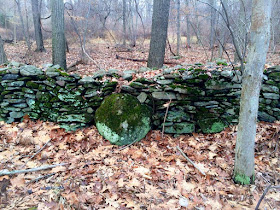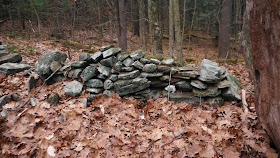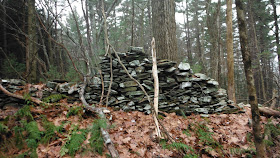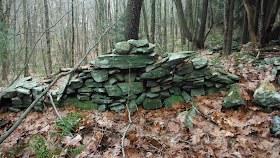"Do you know why
most investigators fail? They refuse to extend their basic knowledge beyond the
bounds of basic investigative procedure. It is the mark of the mediocre
investigator who fails to use the informed imagination part of science that has
in the past led to the greatest of discoveries."
~ Sherlock Stones
Larry Harrop Photo, used by kind permission.
There’s that
beautiful Serpent Wall, right there on Larry Harrop’s Home Page for “Ceremonial
Stone Landscapes; A sampling of Native American stone constructions found in
the State of Rhode Island.” That “Strong Looker” follows you along as you view
all the other photos, keeping an eye on you, knowing your thoughts and
intentions as you see and hopefully observe some of the best photos I know of
that document all the stacking patterns and variations that all but the most
unimaginative might imagine are the results of field clearing or stone fences
made to impress herds of cows or sheep, as the Euro-American Myth goes:
Editing to update the link (Dec. 16, 2022):
"All of these photos are Copyright by Larry Harrop. Katherine Harrop has graciously granted permission to NEARA to host the contents of his web site,
restyled for easier viewing..."
This Serpent formerly in
that original collection entitled “Effigies,” under the subheading “Serpents,” can see in three views of that “composite” head-stone and the undulating back bone
of the Serpent:
Larry Harrop Photo, used by kind permission - and he was nice enough to send a copy to me
rather than use the image I lifted a screen shot from here:
I have looked at
this photo dozens of times before and should really be embarrassed to say that I
should have been thinking of this one in particular just recently when walking
around some very similar constructions along some old, older and oldest of trails.
This one was
disguised the first time I saw it (Nov. 2014), snow clinging to the branches of
a small tree beside it, like a Santa Claus beard:
But when I walked by the same gateway in a stonewall in January 2015, something about it seemed so Serpentine and, now that I reflect on it, much like that photo of Larry's:
There was another
close by, but not in as good shape:
It could be an
unfinished structure or a result of a sort of “normalization” effort to make it
more resemble a Euro-American stone wall, as level as a string stretched
horizontally above it. Maybe it just fell apart or maybe the stones were easily
carted off at some time to be used somewhere else, as close by as a rut in the
present road just below this spot.
Follow that stone
row – or Stone Serpent (or series of Stone Serpents) – and you come to another,
larger and taller and less compromised similar stone row – or Stone Serpent:
Makes me wonder about this one too:




























































